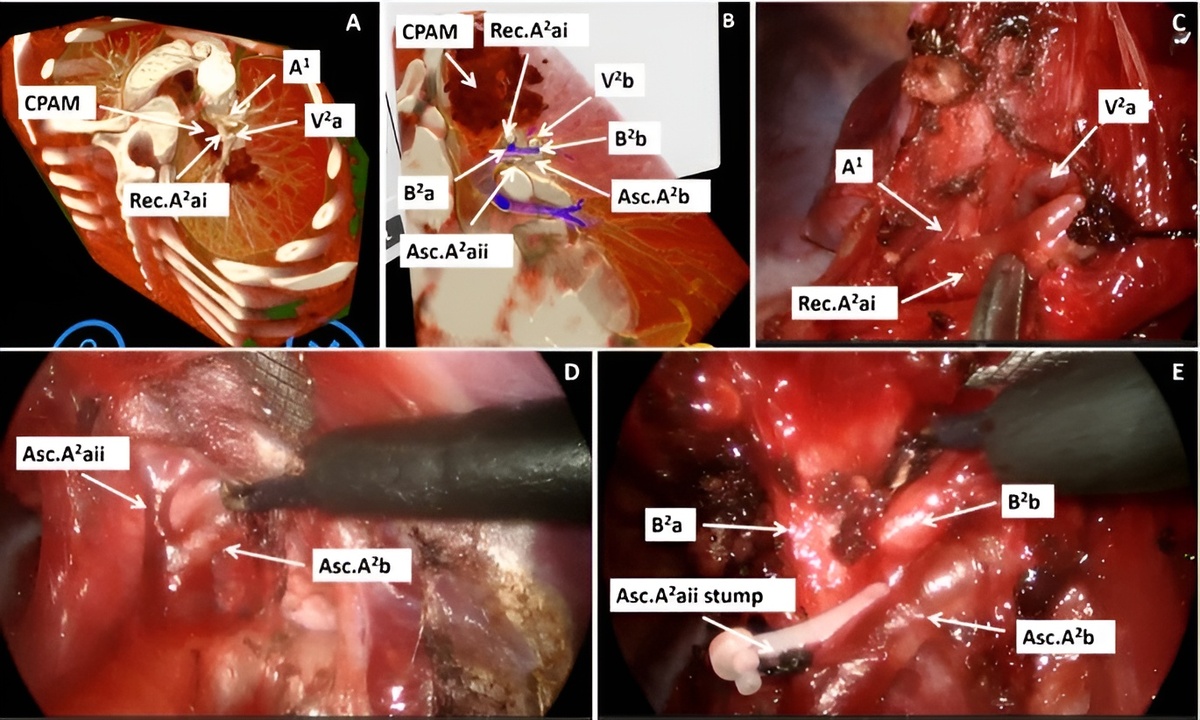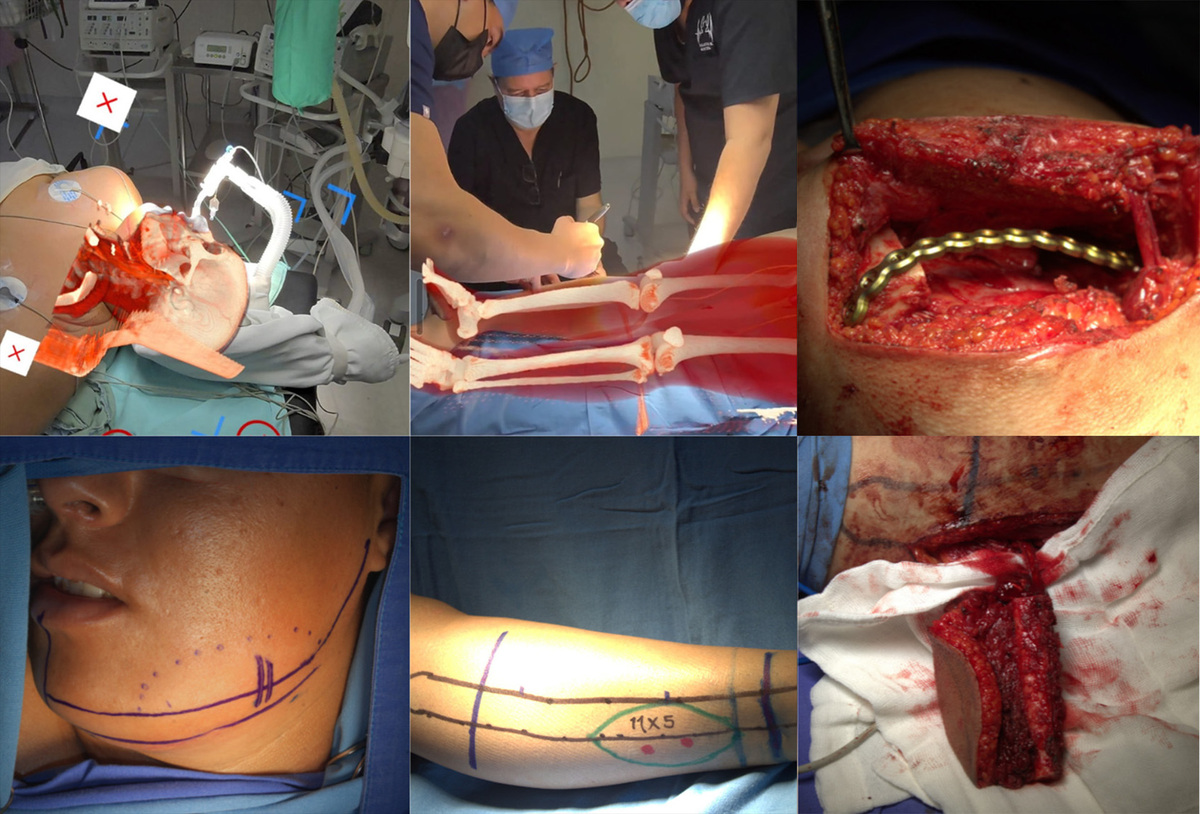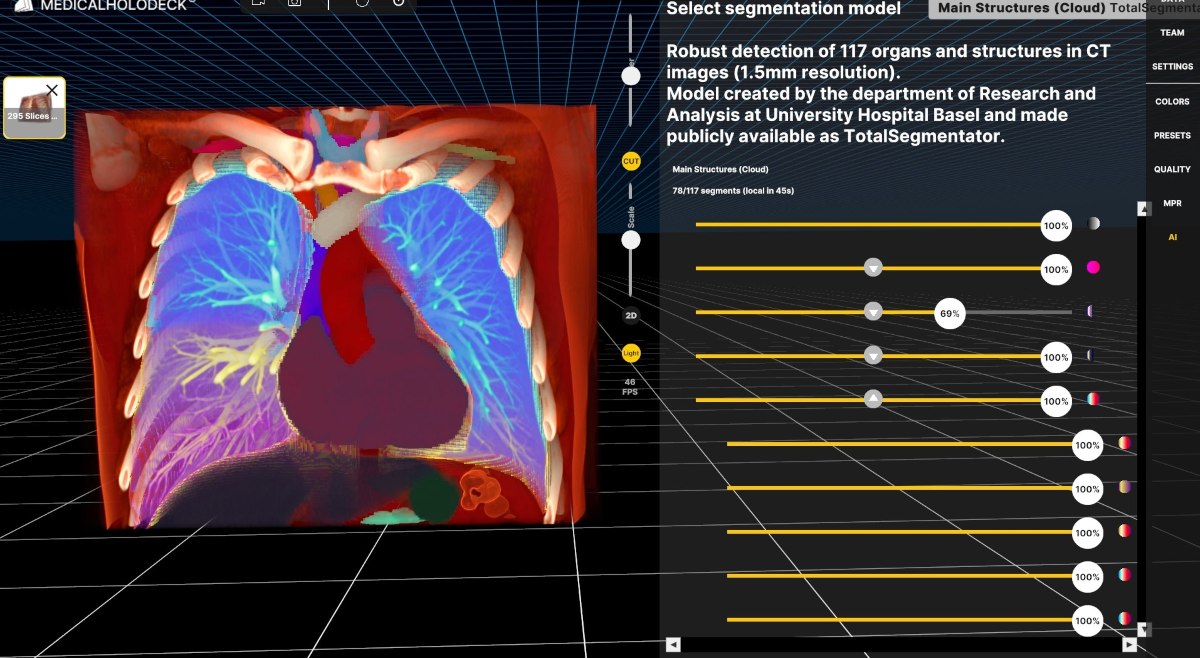What is AI segmentation
AI segmentation refers to the use of advanced algorithms to automatically identify and outline structures within medical images, such as organs, tumors, or blood vessels. It provides consistent, highly precise results in a fraction of the time. This technology empowers clinicians with detailed, actionable insights - supporting earlier diagnoses, more accurate treatment planning, and improved patient outcomes.

Transforming clinical workflows and patient care
The integration of AI segmentation into everyday medical practice is changing how clinicians approach diagnostics and treatment planning.
Faster medical image analysis
AI segmentation significantly reduces the time needed for analyzing medical images in clinical practice. By automating complex segmentation tasks, radiologists and clinicians can quickly extract essential information from scans like CT and MRI, leading to faster diagnoses and earlier treatment decisions. This time efficiency directly translates into improved patient care, particularly in acute and critical care settings where rapid decision-making is crucial.
Reducing human error and increasing consistency
Another key benefit of AI segmentation is its ability to minimize human error and increase consistency. Unlike manual segmentation, which can vary between operators, AI algorithms provide standardized, reproducible results. This consistency enhances diagnostic reliability and confidence, helping clinicians to better monitor disease progression and respond to subtle changes over time.
Enabling personalized treatment through precise segmentation
AI-powered segmentation supports personalized medicine by enabling precise delineation of tumors, lesions, or anatomical structures. The detailed spatial information extracted by AI models allows physicians to tailor treatments more accurately, optimize surgical planning, and reduce potential damage to surrounding healthy tissues.
Streamlining clinical workflows with automated AI tools
Integrating AI segmentation into clinical workflows streamlines healthcare delivery by automating routine processes and supporting decision-making. Automated segmentation combined with real-time analytics enables faster reporting, early alerts, and efficient multidisciplinary collaboration - all contributing to higher quality care without increasing clinician workload.
Recent breakthroughs in AI-powered medical image segmentation
One of the latest advances in AI segmentation is the integration of deep learning techniques with vision transformers. These models have significantly improved the accuracy and flexibility of image segmentation tasks by capturing global context and fine details in images. This advancement enables real-time object segmentation, which is crucial for applications in robotics, autonomous systems, and medical imaging diagnostics.
Medical image segmentation has seen significant progress with the use of AI-driven generic algorithms optimized for accuracy in segmenting organs such as lungs from CT scans. Additionally, new AI models are being developed that require much less annotated data for training, addressing the common challenge of data scarcity in medical imaging. These advances contribute to more precise diagnosis, better treatment planning, and personalized healthcare.
A notable advancement is the creation of an AI tool capable of learning to segment medical images with significantly less annotated data. This tool utilizes generative deep learning techniques to synthesize high-quality training data, reducing the need for extensive labeled datasets by up to 20 times. Such innovations make AI-driven segmentation more accessible and cost-effective, especially in resource-limited settings.
In parallel, researchers from the university hospital in Basel have developed a robust AI model that automatically segments major anatomical structures in MRI images, independent of sequence. This model, called TotalSegmentator, has demonstrated superior performance compared to other publicly available tools, enhancing the efficiency and accuracy of MRI-based diagnostics.
Medicalholodeck bringing AI segmentation into immersive 3D
Medicalholodeck AI leverages the power of AI segmentation to transform medical imaging into interactive, 3D experiences. By integrating AI-generated segmentations with VR and AR visualization, clinicians can explore detailed anatomical structures, plan complex procedures, and conduct interdisciplinary case reviews with unprecedented clarity.
This immersive approach allows teams to visualize tumors, vessels, and organs in real scale, improving understanding and collaboration. With Medicalholodeck, AI segmentation moves beyond the screen, enabling actionable insights that directly impact patient care and surgical precision.
The impact of AI segmentation
AI segmentation is rapidly becoming an essential part of modern healthcare, delivering faster, more consistent, and highly precise medical image analysis. From streamlining workflows to supporting personalized treatment and enabling immersive 3D exploration, these innovations are setting a new benchmark for accuracy and efficiency in patient care.
For more information, contact info@medicalholodeck.com September 2025


